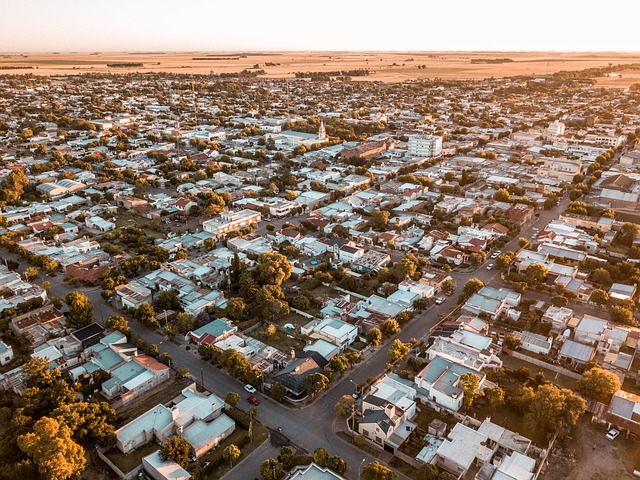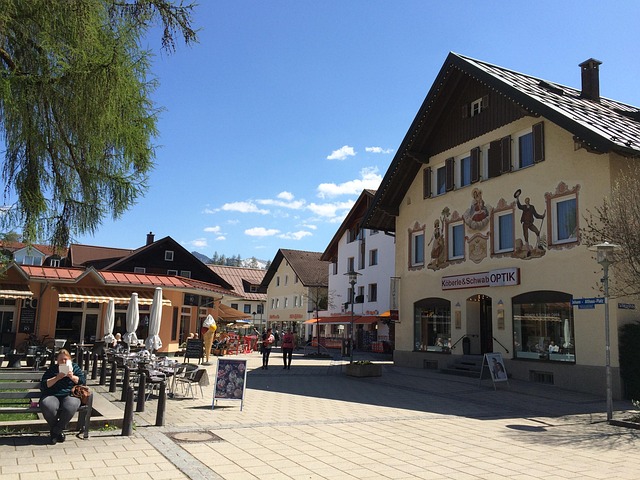Due Diligence: Check Zoning, Contamination Before Real Estate Purchase

Real estate investors must thoroughly assess zoning regulations and land use permits to understand a…….
In the ever-evolving urban landscape, the concept of zoning regulations stands as a cornerstone in the field of urban planning and development. This comprehensive article aims to unravel the intricacies of zoning, exploring its global impact, economic implications, technological integrations, and the challenges it presents. By delving into these aspects, we will provide readers with an insightful understanding of how zoning-regulations drive the built environment, influence market dynamics, and shape our cities’ future. This journey will highlight real-world examples, international trends, and potential breakthroughs that define the landscape of urban zoning.
Definition and Core Components:
Zoning-regulations, at its essence, is a system of land-use planning that divides a geographic area into zones, each with specific permitted uses. These regulations govern the type of development (residential, commercial, industrial) allowed in each zone, setting guidelines for building design, density, and infrastructure. Key components include:
Historical Context:
The concept of zoning emerged in the late 19th century as urban areas experienced rapid growth and industrialization. Early zoning ordinances focused on health and safety concerns, preventing harmful industries from encroaching on residential areas. The first comprehensive zoning code was introduced in New York City in 1916, setting a precedent for many cities worldwide. Over time, zoning evolved to address aesthetic considerations, traffic management, and community character.
Significance:
Zoning-regulations play a pivotal role in managing urban growth, ensuring that development is orderly, sustainable, and aligned with community needs. Here’s why it matters:
International Influence:
Zoning-regulations have a global reach, with countries adopting and adapting models to suit their unique cultural, social, and environmental contexts. Here’s a glimpse of international trends:
| Region | Approach | Notable Features |
|---|---|---|
| North America | Comprehensive Zoning | Strict separation of uses, high-rise residential towers in urban centers, single-family homes in suburban zones. |
| Europe | Mixed-Use Development | Blending commercial, residential, and retail spaces, promoting walkability and reducing car dependency. |
| Asia Pacific | High-Density Urbanization | Rapidly growing cities like Tokyo and Singapore embrace high-rise buildings and mixed-use districts to accommodate dense populations. |
| Middle East | Modernization and Standardization | Newer cities like Dubai adopt modern zoning codes, focusing on tourism, commerce, and residential districts. |
| Latin America | Contextual Zoning | Adapts regulations based on local conditions, preserving historic centers while allowing growth in peripheral areas. |
Trends Shaping Urban Planning:
Several global trends are influencing the evolution of zoning-regulations:
Market Impact:
Zoning-regulations have a profound effect on the real estate market, influencing property values, development opportunities, and investment strategies:
Zoning’s Role in Economic Stability:
Well-designed zoning policies contribute to economic growth and stability:
Digital Tools in Zoning:
Technology has revolutionized urban planning, making zoning processes more efficient and accessible. Here are some key integrations:
Benefits of Digitalization:
Digital tools offer several advantages:
Common Hurdles:
Despite its benefits, zoning-regulations face several challenges that can hinder urban development:
Innovative Solutions:
To overcome these challenges, cities are adopting innovative strategies:
Emerging Breakthroughs:
The future of urban zoning is poised for exciting developments, driven by technology, sustainability, and community-centric approaches:
Zoning-regulations are a dynamic force shaping the built environment, economies, and communities worldwide. As cities grapple with rapid urbanization and changing social needs, effective zoning becomes even more critical. By embracing technological advancements, promoting sustainable practices, and fostering community engagement, urban planners can navigate challenges and create vibrant, resilient, and inclusive urban spaces.
As we look ahead, the future of urban zoning promises innovative solutions that will redefine how we design, build, and live in cities, ensuring they meet the needs of both present and future generations.

Real estate investors must thoroughly assess zoning regulations and land use permits to understand a…….

A thorough site assessment is crucial for real estate development, considering zoning, utilities, so…….

Real estate trends vary widely across cities and counties due to local economies, demographics, poli…….

Real estate trends vary widely across locations, influenced by local economies, demographics, and pl…….

Real estate development balances building dimensions and property density to maximize investment ret…….

Before acquiring a real estate development site, conduct a thorough evaluation including legal and r…….

In real estate, understanding building dimensions is crucial for developers and investors to optimiz…….

Understanding building dimensions, such as floor area and height, is crucial for real estate profess…….

Real Estate professionals must stay compliant with legal and regulatory requirements to avoid severe…….

Noncompliance in real estate carries severe risks, including legal penalties and license revocation,…….